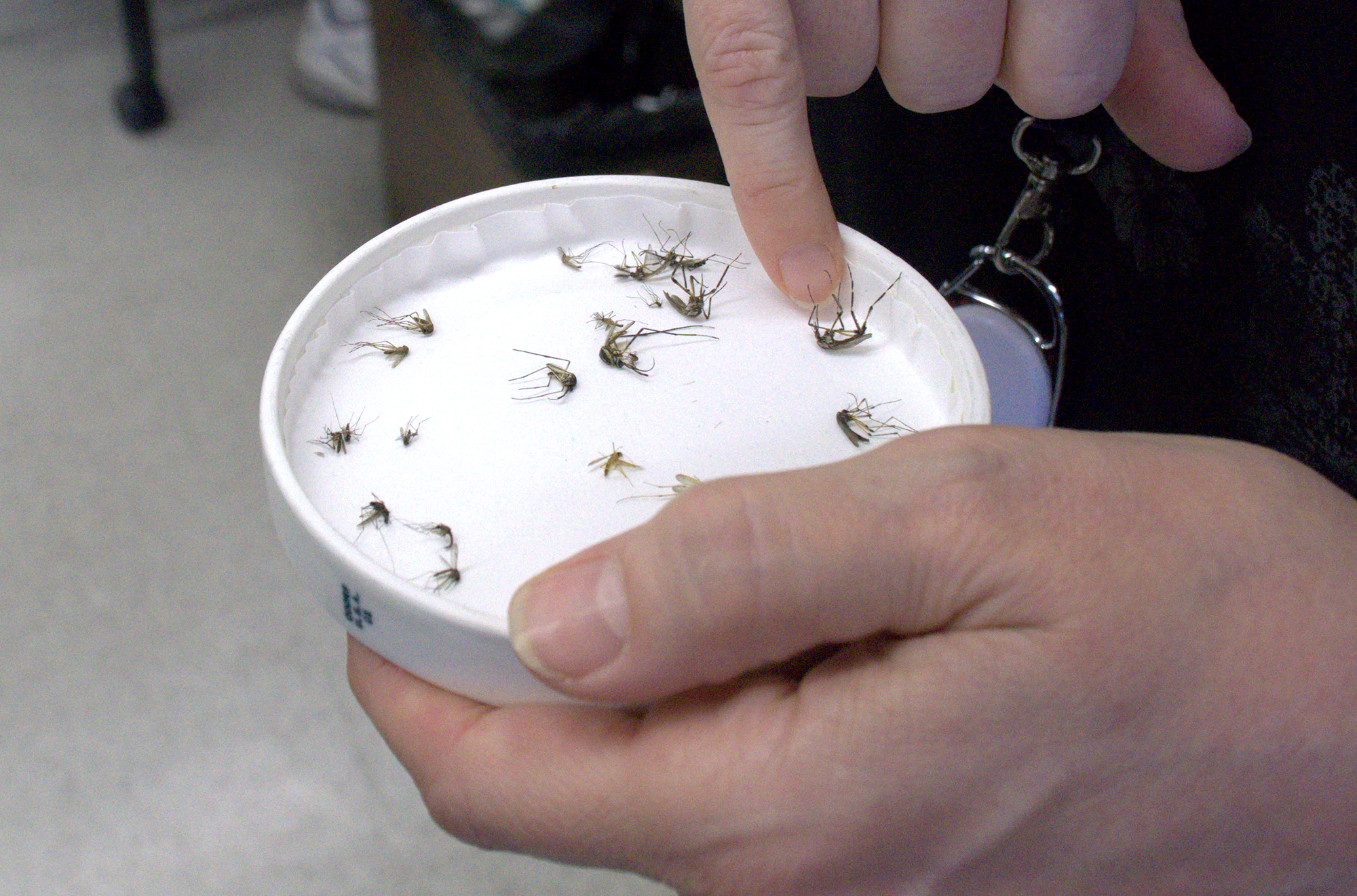The Forgotten History of Disabled Children under Nazism
From The Devil’s Castle: Nazi Eugenics, Euthanasia, and How Psychiatry’s Troubled History Reverberates Today, Counterpoint Press.
The prosecutor at the Treblinka trials, Alfred Spiess, described his defendants to filmmaker Claude Lanzmann this way: “They weren’t SS men; they came from the euthanasia project, became accustomed to killing, were kept together during the winter of the war 1941/42 in order to be brought into the extermination camps. That was the long-term plan of the Nazi regime…And this circle of people became accustomed to killing within the scope of the euthanasia project.” Treblinka had the second highest death count among the Nazi camps, at least eight hundred thousand and as many as nine hundred and twenty-five thousand, second to Auschwitz’s approximate count of 1.1 million.
We should collectively want to understand the euthanasia program that enabled so many ordinary German workers and doctors to kill so many. For far too long, we’ve barely looked—especially now, in the wake of historic antisemitism.
The official euthanasia program began with an order from Adolf Hitler, the only genocide order Hitler himself signed. The brief note, written in October of 1939, was backdated to September to tie it to the start of the war. Many institutions already had practiced ad-hoc euthanasia. Hitler’s phrasing suggests little of what they were about to do, little of what they were already doing. The euthanasia order went to the Führer’s traveling physician Karl Brandt, and to Philipp Bouhler, the head of Hitler’s private Chancellery. Hitler instructed Brandt and Bouhler to “broaden the authority of certain doctors to the extent that persons suffering from illnesses judged to be incurable may, after a humane, most careful assessment of their condition, be granted a mercy death.”
The words that matter here are “doctors” and “death”: “humane,” “careful assessment,” and “mercy” give pointless ornamentation, scrollwork on the death certificate. In 1935, Hitler told the Reich health leader that he intended to use the war as cover to rid Germany of the mentally ill. He’d considered putting euthanasia for mental illness into an earlier law, though he dropped the idea as likely to cause “too great a sensation.” At the time Hitler gave the order, mental patients were being killed in Poland, mostly by gun, but a few by gas.
Hitler’s note still exists, a few sentences of blotchy type on private stationery—just his name with a swastika and Nazi eagle. Euthanasia actions would take the lives of about two hundred thousand within the Reich, three hundred thousand including occupied territories. The figure includes between five and ten thousand children. Euthanasia would kill mostly non-Jews but initiate and make routine the practice of targeting Jews for death. At least one child was euthanized even during the Allied occupation.
In the words of a historian, before the Final Solution, “Himmler outsourced mass killings to the euthanasia department.”
“Himmler outsourced mass killings to the euthanasia department.”
I make a point here first made to me by historian Cameron Munro, head of the Tiergarten 4 Association in Berlin: there are no terms that fully capture the evolving sphere that was Nazi euthanasia. It began with children, then became the much larger, adult Aktion T4. T4 refers primarily to the killings that happened in gas chambers built into six asylums across Germany and Austria in 1939. After T4 came wild euthanasia, and in the midst of it all, sub-action 14f13, which brought T4 “assessing” doctors to the concentration camps. Ongoing psychiatric murders happened in occupied countries by Nazi roving military forces called Einsatzgruppen. In 1944, came Aktion Brandt, which murdered, among others, shellshocked German women after the bombings.
The children’s action launched with an infant known as Baby K. Baby K was born blind, with one leg and part of an arm missing. His parents called him “the monster.” In 1939, the parents of K petitioned Hitler to allow them to have the child killed. Hitler sent his own physician, Karl Brandt, to examine the boy. With Brandt’s blessing, Baby K died at five months of a lethal overdose.
Baby K’s death started a program of murdering children born with physical disabilities. By August of 1939, doctors and midwives were required to report “deformed” infants, the reporters often compensated. Most would die as Baby K did, in a hospital. The means were drugs and starvation. Hospitals in the program set up killing units, called by a euphemism like “special wards” or “children’s wards.” The word “special” haunts Nazi killing programs, in which Sonderbehandlung or “special handling” meant death, Sonderkost or “special diet” starvation. Frequently, nurses, sometimes members of a religious order, administered the drugs. Often, doctors gave drugs like barbiturates slowly, so the cause of death would be pneumonia, which sets in when the lungs slow.
The Nazi government officially kept the programs secret. But it barraged the population with propaganda about the “inferior” and the value of euthanizing them. Films, posters, and news reports focused on the high cost of hospitalization and even the desire of the disabled to die. Institutions gave tours. One propaganda film, Dasein Ohne Leben or “Existence Without Life,” was filmed at Sonnenstein, though never released, as soon after the program shifted to the camps. Narrated by Paul Nitsche, among others, the film concluded, “The face of an unfortunate being, distorted and tormented by incurable mental illness and inhuman existence, is smoothed by the peace of a gentle death, which finally brought help, the redemption.”
School textbooks offered children problems like these: “The construction of a mental asylum required 6 million Reichsmarks. How many settlement houses at 15,000 Reichsmarks each could have been built for this?” Or “A mentally ill person costs 4 RM a day, a cripple 5.5 RM, a criminal 3.5 RM. In how many cases does a civil servant only have around 4 RM [in salary] per day…Visualize these numbers.”
A touring SS officer at Eglfing said the institution should set up a machine gun at the entrance, a joke that amused director Hermann Pfannmüller. Pfannmüller was a psychiatrist and neurologist, an aloof man with thick, round glasses. If I showed you his photo and called him an early twentieth-century German psychiatrist, you’d probably guess a follower of Freud. Actually, he was a fanatical National Socialist and a strong believer in child euthanasia. A teacher named Ludwig Lehner toured Eglfing and testified later that Pfannmüller bragged about using the “natural” means of starvation to kill his patients, lifting a skeletal child “like a hare” and predicting the child would die in another two to three days. Lehner described his disgust at “this fat and smirking man with the whimpering skeleton in his fleshy hand.” Later, hearing this statement at trial, Pfannmüller responded that he “never grinned” at such moments, and that he’d never had fleshy hands.
Pfrannmüller caused the deaths of several hundred children and exported more than two thousand patients to be killed at asylum death centers. He was tried in 1951 and served four years. In the end, the court agreed with the doctor’s logic, declaring that, as he used starvation, he was not a murderer “in the classical sense.”
Euthanasia quickly expanded to Aktion T4 and adults. Its leaders set the goal of ending 70,000 disabled, mostly neuropsychiatric, lives within Germany’s borders, probably a rough estimate of the number of people institutionalized. This goal would take more than discrete hospital wards. Aktion T4 set up offices at 4 Tiergartenstrasse, in a home stolen from a Jewish family named Liebermann—a city villa in an elegant neighborhood of Berlin. Number 4 Tiergartenstrasse no longer exists. In photos, it looks a bit eerily like my Victorian house, upright, with bay windows and much trim.
But to separate German euthanasia from the Holocaust is false. The latter was not a switch but a terrible evolution.
Eugenic euthanasia had the international support that future Nazi killing programs would not. But to separate German euthanasia from the Holocaust is false. The latter was not a switch but a terrible evolution. T4 was the first Nazi program targeting a specific “undesirable” group. Even within the careless T4 selection process, Jews had a special status—not spared by ability to work, frequently not examined at all. By the summer of 1940, all Jewish psychiatric patients were killed. Their deaths didn’t even warrant one of T4’s fake condolence letters.
The scripts and rationale for the Holocaust came from this first wave of mechanized killing. So did the technology and the personnel. The majority of T4 doctors left the program for the Holocaust.
In fall of 1941, T4 ended as an official program, and attention shifted to the Holocaust. The Wannsee conference that determined “the final solution to the Jewish question” convened in January 1942. Then, a program called Aktion Reinhardt launched the death camps, the first camps built only for killing. The first three of these—Belzec, Sobibor, and Treblinka—went up in Poland. These camps would take the lives of one and a half million people. The largest number died at Treblinka.
T4 provided personnel for the death camps—doctors, builders, operations staff, and directors. All these workers had to find death camps tolerable, or more than tolerable, workplaces. Of course, a larger operation drew in more workers; much camp business was conducted by the Nazi Schutzstaffel or SS. But T4 brought the medical and gas chamber expertise and much of the camp leadership. Many T4 doctors also transferred to camps like Auschwitz, a concentration camp that evolved into a death camp.
It’s a natural assumption that pre-war Nazi medicine was cruel and crude, given where it led. But it was not. In the 1920s and 1930s, Germany had the world’s largest number of Nobel laureates and led the world in many areas of science and medicine: cancer research, technology, aircraft development, to name a few. German medicine first recognized and tried to prevent the dangers of substances like asbestos. It moved into areas that feel contemporary, like eating whole grains and using plant-based medicines. Dachau held a concentration camp and also a field of medicinal botanicals. Germany had an unusually large number of female doctors, one of whom would be tried at Nuremberg.
In some ways, German success set up German evils. Public awareness of issues like cancer and asbestos poisoning made the language of tiny and undetectable toxins infiltrating the body frightening. Jews and the Roma and Sinti became the virus, the bacillus, the poison in the flesh. To paraphrase historian Robert Jay Lifton, essential to euthanasia and the Holocaust was the idea that killing could represent not destruction, but a supreme expression of healing—by killing the individual, doctors cleansed the state. The extremes were new and unspeakable. The ideas were not.
Germany also had laws governing medical ethics, ethics courses at medical schools, and ethics discussions in medical textbooks. Their ethical standards were among the strictest in the West. A 1900 law banned medical experimentation without consent, on minors, or on anyone incapable of giving consent. A 1931 law, passed two years before the Law for the Prevention of Hereditary Diseases, tightened up sanctions against experimenting on children. Some aspects of these laws exceed the standards of the Nuremberg Code. No one I’ve found in my extensive reading about Nazi medicine came out during the euthanasia period and said the rules should be suspended. They were simply flattened under the wheels of ambition, greed, and the idea that service to the state trumped all.
T4’s influence was also psychological. German historian Götz Aly writes, “I am convinced that even limited protests against the euthanasia murders in 1940 would have hindered the development of systematic genocide in 1941…If people did not protest even when their own relatives were murdered, they could hardly be expected to object to the murder of Jews, Gypsies, Russians, and Poles.”
Alfred Spiess, chief prosecutor of the Treblinka trials, spent months with the men who ran Germany’s second most lethal camp. He left certain that euthanasia programs formed a strategy not just to eliminate the “sick” but to get doctors and other personnel used to mass murder. Kurt Franz, who rose from working as a cook at Sonnenstein to the deputy head of Treblinka, put it more bluntly in a letter: T4 showed that ordinary people could be persuaded to do terrible things, “without scruples.”
“I am convinced that even limited protests against the euthanasia murders in 1940 would have hindered the development of systematic genocide in 1941…If people did not protest even when their own relatives were murdered, they could hardly be expected to object to the murder of Jews, Gypsies, Russians, and Poles.”
Most euthanasia doctors rose through party channels, joining the NSDAP (National Socialist German Workers’ Party, the Nazi party’s official name), and often, the SS. Medicine was the most Nazified profession in Germany; half of all German doctors joined the NSDAP during the 1920s. Doctors were seven times more likely to belong to the SS than other professionals. Illness became a language of the Reich; Hitler “the country’s doctor.” Nazi propaganda also created a mission for psychiatry, associating Jews with mental illness, building on the theories of men like German psychiatrist Emil Kraepelin that Jews were mentally unstable and prone to psychopathy.
Before the NSDAP came to power, Berlin had Germany’s highest concentration of Jewish doctors—about half of all doctors practicing there. But Jewish doctors worked throughout Germany. The heavily Nazified German medical association and Nazi race laws drove them out of their practices, a large-scale process but not an overnight one. Hitler began his relationship with mistress Eva Braun around 1931, and by 1936, he’d ensconced Eva in his mountain retreat, the Berghof. Braun’s sister Ilse worked for a Jewish doctor named Marx in Munich until 1938. Ilse and her boss were friends, and Ilse stayed with Marx’s practice until he had to flee. The doctor vacuum created upward mobility for Aryan doctors, along with higher salaries. Many doctors in the NSDAP, at least in urban practices, actively or complicitly threw former colleagues and former teachers out of their jobs.
Karl Brandt, who started T4 and would later oversee medical experiments at the camps, was an exception to the rule of doctors rising through the ranks. Still in his late twenties, Brandt got Hitler’s attention when he treated Hitler’s adjutant, Wilhelm Bruckner, after a car crash. Some sources also place Geli Raubal at the scene of the accident. Geli Raubal was the daughter of Hitler’s half-sister, nineteen years his junior. Hitler adored her with an intensity he never had for another woman, including long-term mistress Braun. In 1929, Hitler moved twenty-one-year-old Raubal into his Munich apartment. Almost certainly, the relationship was consummated. Raubal died in the apartment at twenty-three, by gunshot—either a suicide, because she wanted to get away from Hitler’s obsessive attention, or a murder, perhaps because he knew she wanted to leave. In the meantime, Brandt impressed Hitler so much that Hitler invited him to be his escort doctor, accompanying the leader when he traveled.
Brandt was handsome, courtly, and popular at Nazi gatherings. Though devoted to party and Führer, he remained in his own mind a doctor who acted medically, whether opting for treatment or death. Brandt admired Nobel Peace Prize winner Albert Schweitzer, and at one time thought of joining Schweitzer as a medical missionary. At first, Brandt objected to gas, because he believed a euthanasia “treatment” should be medical, as in an injection.
Philipp Bouhler, the other recipient of Hitler’s “Führer order,” wasn’t a doctor but a high-ranking functionary. Bouhler had round glasses and looked bookish and boyish, like a person inclined to study philosophy, which he had. He’d written a flattering biography of Napoleon, maybe why Hitler tapped him to write his own hagiography, Adolf Hitler: A Short Sketch of His Life. The booklet was meant for international consumption and filled with phrases like “broadminded and big-hearted and just.”
Brandt and Bouhler brought in Viktor Brack, another bureaucrat (German has the useful term Schreibtischtäter, which can be loosely translated as “desk murderer”) who worked with Bouhler at the Chancellery. Brack had had a run of jobs before rising in the party, from farming to racing BMWs to the source of his upward mobility–he served Reichsführer Heinrich Himmler, who ran Germany’s genocidal operations, as chauffeur. Like many others, Brack would “graduate” from the T4 program to help build the death camps, bringing his expertise with gas chambers. He also experimented with sterilization, proposing to Himmler the creation of an enslaved workforce of three million sterilized Jews.
These men assigned medical leadership to psychiatrists Werner Heyde and Paul Nitsche, director of Sonnenstein. Heyde, who would be charged with one hundred thousand deaths by a very unpopular Jewish prosecutor, was bisexual or gay. Nazis targeted men like him; between ten and fifteen thousand gay men died in the camps. In photos, Heyde’s face is unexpressive: the face of a man with no secrets or with many. Other than that, Heyde resembled many other men committed to the Reich, once described by another doctor as “a real Nazi who had no inhibitions.” Despite his past, Heyde lived and practiced openly in Germany for decades after the war, using a flimsy and winked-at pseudonym.
Twice, the SS investigated Heyde’s sexuality, tipped off by a man who claimed Heyde tried to seduce him. The first investigation didn’t go anywhere, due to the bungled handling of the files and Heyde’s powerful friends. One such friend was an SS officer and former patient of Heyde’s named Theodor Eicke. Heinrich Himmler had known Eicke, whose motto was “tolerance is a sign of weakness,” since the foundation of the SS. Himmler wanted Eicke to take over the Dachau concentration camp, which at the time held mostly political prisoners. Standing in the way was Eicke’s psychiatric hospitalization. Eicke got into a power struggle with a senior Nazi official, who declared him a “lunatic” and got him locked up. Those who knew him described Eicke as violent and disruptive, qualities that made him lunatic in one context and the right person for the state in another. Only Heyde accepted Eicke’s sanity. Eicke shared his gratitude with Himmler, saying he “could have hugged” Heyde.
Himmler was so pleased by Heyde’s approval that he sent the doctor a cash tip. The pre-Eicke Dachau released many of its prisoners. It could be a brutal place, but not the hell that would characterize later concentration camps. Eicke’s so-called “Dachau spirit”—meting out violent punishments and death for the slightest infractions—impressed Himmler so much he put Eicke in charge of the entire Nazi camp system. The camps’ daily brutality owed more to Eicke, and indirectly to Heyde, than to anyone else.
T4 launched with paper: so much paper. The centralized review process at 4 Tiergartenstrasse was more complex than that of the children’s action. In 1939 questionnaires went from Berlin to institutions across Germany and Austria and poured back in, where they were copied and distributed. T4 had a bureaucracy’s letters, memos, and personnel paperwork, along with its questionnaires, transport lists, requests for drugs and gas cannisters, victim photos and medical charts.
T4 sites had secretarial staff and rooms of files. A document found at Hartheim after the war included calculations like the costs of euthanizing seventy thousand people as opposed to ten years of feeding them. Perhaps another math problem for the children’s textbooks.
For the questionnaires, called Meldebogen, medical staff had to report anyone hospitalized for five years or longer, with schizophrenia or another “hopeless” mental condition, syphilitic mental disease, epilepsy, “feeblemindedness,” or dementia. Doctors could and did report outside of these suggested categories. They reported the patients’ citizenship, along with yes or no on “German blood.” By far the most crucial category, in keeping with Binding and Hoche, was the ability to work. “Useless eaters” were generally destroyed.
T4 headquarters employed about thirty reviewers. Three doctors responded to each form with a symbolic double-speak: a blue minus sign for life, a red plus sign for death. These marks got scribbled in a black box on the side of the form, along with initials. The speed of each reviewer mattered; they were paid piecework per form, rather than by salary. One reviewer did fifteen hundred forms in a month. Head doctors like Nitsche also scanned the forms. Death required the agreement of two of the three reviewers, though the review process always tended toward death. Doctors elsewhere did assessments, fitting in Meldebogen while working long hours at another job. Hermann Pfannmüller at Eglfing-Haar sometimes processed over a hundred forms a day.
In the beginning, most workers at health care facilities didn’t know the reason for reporting. Some responders exaggerated patients’ symptoms, thinking the program aimed to remove the healthier for war labor.
T4 set its goal of seventy thousand dead with no obvious means of getting there. Karl Brandt tried injections, but death was slow and could take multiple shots. Himmler had become interested in gas as a quick, cheap method of killing, one less stressful for soldiers, who often broke down psychologically when killing so many by gun. In 1939, Nazi troops received orders to empty asylums in the East, getting rid of “useless eaters” in occupied lands. At first, patients were shot, standing in front of a large pit—some fell forward still in their straitjackets. Reports went to Himmler about badly shaken troops. Guns also used up valuable ammunition.
And so the first gas chamber for the purpose of mass death was built and tested in January of 1940 near Berlin. Attached to the site was the first oven built to dispose of quantities of bodies and bespoke stretchers to convey those bodies without too much handling. These were built in Viktor Brack’s office. The site was an old prison in Brandenburg. T4 administrator Christian Wirth, a cooper’s son, managed the actual construction. Wirth would move on to help run T4 site Grafeneck and then head death camps Sobibor and Treblinka—a man in the Eicke mold whose nickname was “savage Christian.”
Philipp Bouhler had the idea of disguising the room as a shower, possibly with Brandt and Reich chemist Albert Widmann’s input. Patients going in groups, nude, into a large shower would seem plausible to victims. So did the sealed-up room. Workers tiled the chamber with bathroom tile and built in shower benches. Victims were handed towels on the way in. An unobtrusive opening let in carbon monoxide through a pipe, again coming from a car. Between eighteen and twenty patients were brought from a nearby asylum for the test. Observers watched through small viewing windows. The shower ruse worked. Victims went in willingly and died quietly, their bodies discreetly burned.
Brandt’s scruples were overcome. He called the results a “major advance” in medicine. Brandt predicted that countries around the world would adopt the technology, as Ernst Rüdin predicted that after Nazism’s success, the world would euthanize.
Most people have become so used—so terribly used—to the story of the Holocaust that it’s hard to teeter at this moment: the men at the viewing windows, waiting to see if a gas chamber would work. Much detail is lost; many of these men were dead by the war’s end or soon after. Some, like Brack, had already decided on using gas in some form, even if Brandt had not. Still, if patients had balked badly, or if Bouhler hadn’t come up with the shower idea. Or if someone had talked him out of it. If enough went wrong, Brandt’s skepticism might have prevailed. Brandt later discussed the successful test gassing with his Führer.
With Brandenburg came a profound pivot, a moment in which a long, long future, still with us, began to unfold.
Another pivot, another future, opened at Brandenburg. For T4 to establish killing sites, Germans would have to consent to the killing of Germans. Or at least, not mind too much. While T4 killed Jewish patients disproportionately, victims were still mostly Aryan. That many deaths couldn’t be disguised forever. Most Germans made a keen distinction between killing their own citizens and killing non-Germans. I doubt anyone felt certain that the stigma of disability and neurodivergence would overcome qualms about killing Aryan citizens.
If the public tolerated this killing, its qualms about killing non-Aryan non-citizens couldn’t be very great. Late in the war, a guard at the death camp Treblinka, who must have been used to almost anything, expressed disbelief that Operation Brandt killed adult, Aryan Germans in Germany. Apparently, Hitler’s “great sensation” of resistance to mass death could be overcome.
Continue Reading…












